You know you have the most interesting order in a restaurant when the people next to you can’t stop stealing glances. On a summer Thursday afternoon at Agave Handcrafted Kitchen in San Jose del Cabo, Mexico, I sat with a plate of seared tuna resting on a spread of peanut butter cilantro sauce — chef Guillermo J. Gómez’s interpretation of a pesto using local ingredients. The couple next to me spoke loud enough for me to hear that it’s not something they would have ordered but they were curious what a vibrant green peanut butter cilantro sauce would taste like.
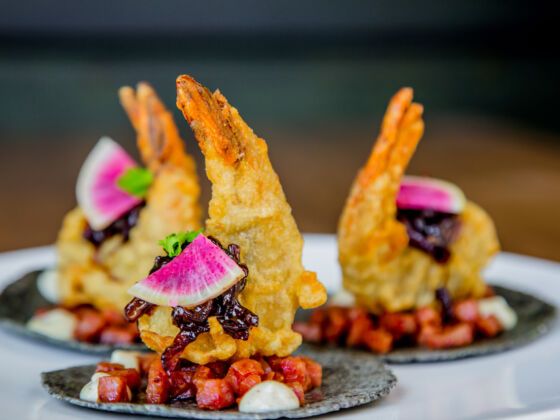
Why You Should Know Cabo Just as Much for Quality Dining as for Partying
And then they heard Gómez describe the thinking behind the dish.
The Argentina-born chef leaned on his more than two decades of experience cooking in acclaimed restaurants in Spain, France, Italy, Uruguay, Mexico, and the US when creating Agave’s menu. He took his knowledge of globally loved recipes and created balanced interpretations using what he could source from Baja California. In this particular dish, that included the tuna, peanuts, cabbage, and peppers. At least 80 percent of the ingredients Agave uses, Gomez noted, are regionally sourced.
“Excuse me chef,” the woman who had been eyeing the dish from the next table interjected. “We didn’t order that and now we wish we had, but we’ve been coming to Cabo for 12 years and haven’t had food this good.”
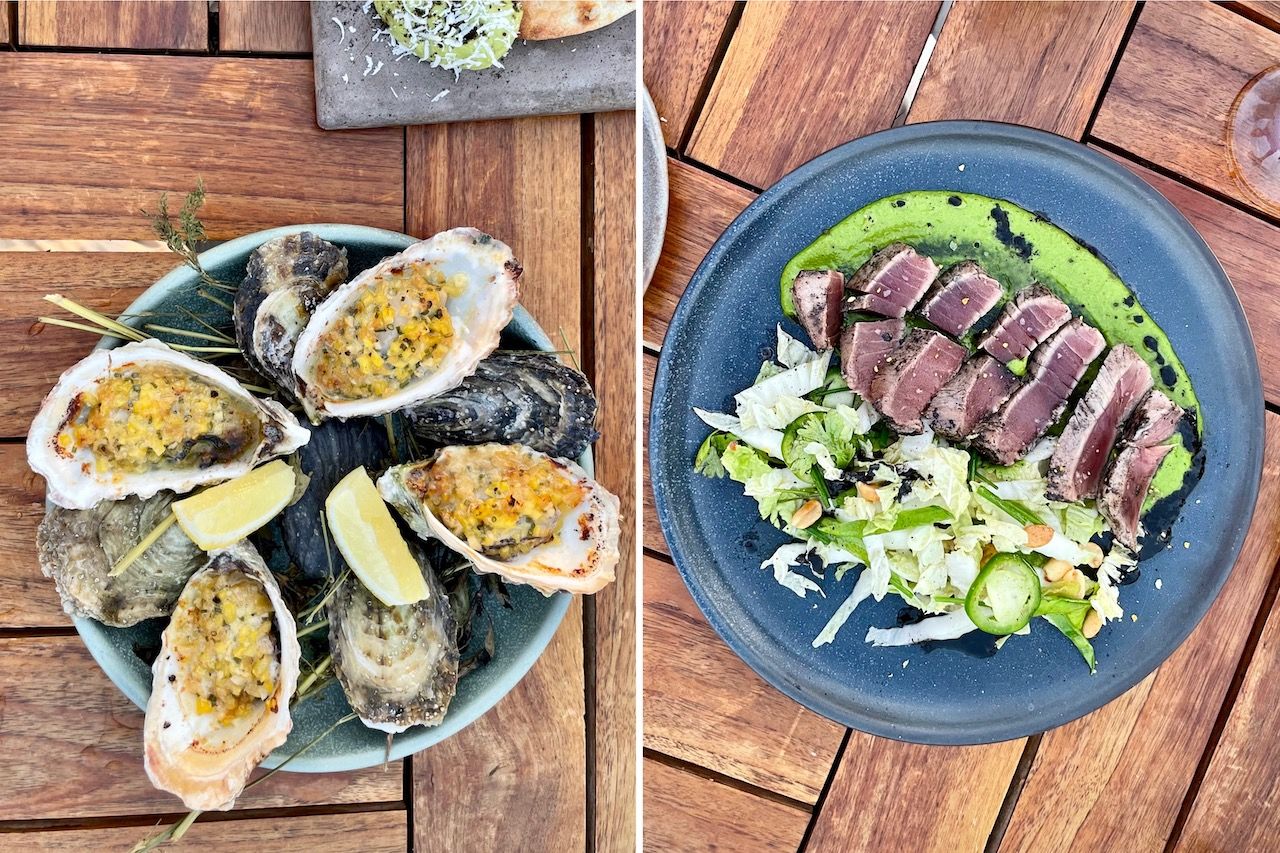
Photo: Nickolaus Hines
It was a sentiment I heard others mention multiple times on my five-day trip. It was my first time to Cabo, but I came with low expectations based on my experience eating in other locales more known for all-inclusive resorts than local cuisine. Those expectations were exceeded multiple times over, whether I was eating in San José del Cabo or the more resort-filled Cabo San Lucas, which together compose Los Cabos and are often lumped together by tourists as simply “Cabo.”
The tip of Baja California might not have the same cachet as a center of gastronomy like Oaxaca or Mexico City. It’s not just a thrown together all-inclusive menu and Cabo Wabo Cantina, however. In Los Cabos, you can find quality dining that’s unique to where the food is made.
A party reputation that’s hard to shake
The region of Los Cabos best known to tourists is the 20-mile corridor of resorts that stretch from San José del Cabo down to Cabo San Lucas. The latter is where you’ll find the resorts and lively tourist-heavy bars, while the former has a downtown filled with art galleries, shops, and restaurants.
Los Cabos as a whole has long had a party reputation that’s only recently begun to evolve. Take, for example, a 2004 episode of the show Laguna Beach called “What Happens in Cabo.” The town isn’t described as anything other than, as The Ringer puts it, “a place without parents or rules, packed with beautiful people, purchasable alcohol, and emotional narratives” where it seems “as though the laws of man do not apply within the town’s boundaries.”
The perception stuck. By 2015, Cabo was described in the New York Times as “Cancún meets San Diego,” where “farm-to-table dining is a surprise.” The paper of record’s 52 Places traveler Jada Yuan admitted in 2018 that she’d heard it described “as tourist-y and cheesy, which it is in parts.”
Seeing the people on my flight from Denver in late July made it clear that reputation is still prevalent. Along with honeymooners wearing “hubby & wifey” shirts, there were groups of people boarding the early morning flight more than a little drunk and all too ready to loudly complain about airlines no longer selling alcohol.
It’s impossible for me to know where those passengers went after landing and if they got the tequila shots they wanted. However, I can attest that it was easy to find a version of Cabo more focused on spirits made for sipping, not shooting, as well as food with a sense of place rather than room service hamburgers and fried cod tacos.
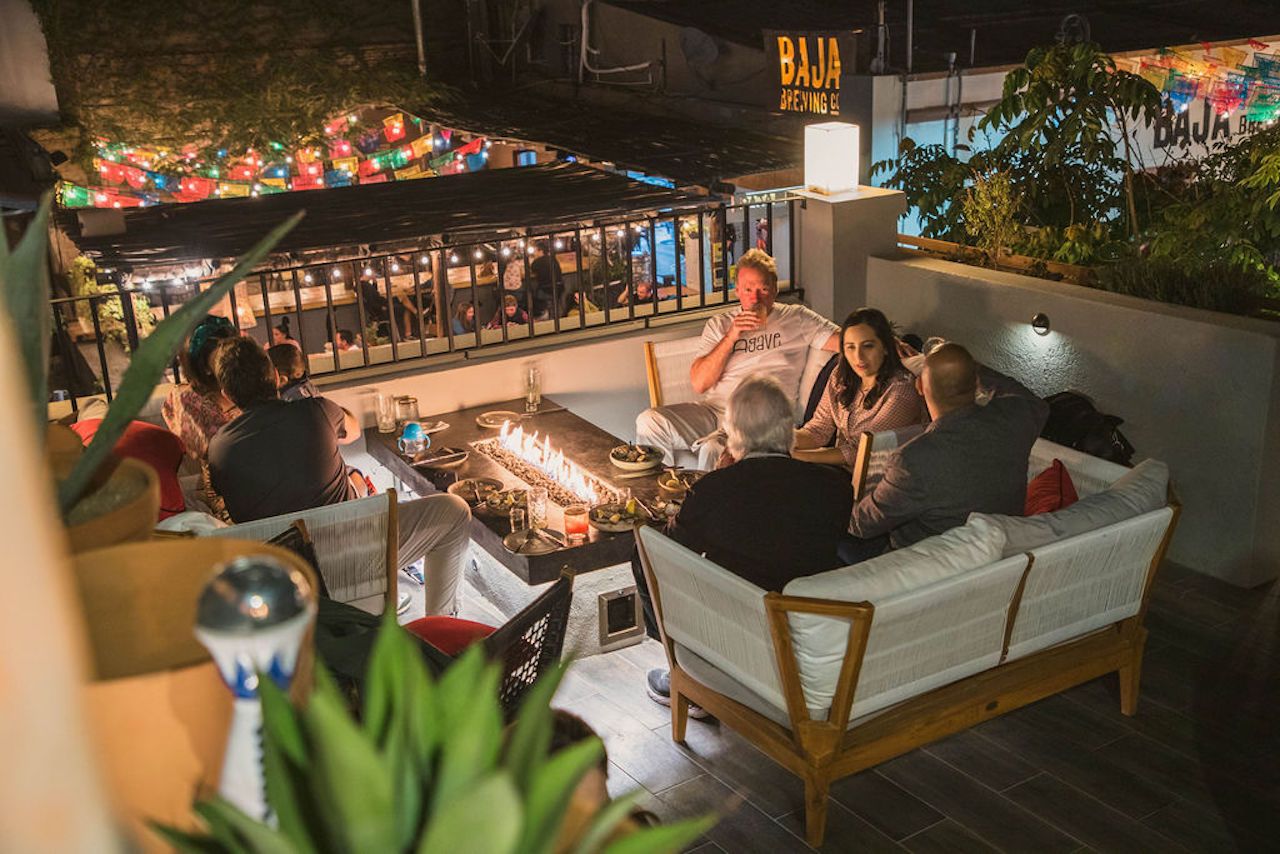
Photo: Agave Handcrafted Kitchen
At Agave, that meant a starter of locally sourced oysters baked with in-season green mangos. After came suckling pig served with a sauce made with the pork juices and Ancho Reyes liqueur, octopus with a poblano rub, and a dessert of passion fruit, plantain, and Mexican cinnamon.
“It’s crazy the amount of product you have in Mexico,” Gómez told me as we slurped back an oyster. “I try to always have an identity of the place where we are and what is in season.”
The focus on gastronomy is as prevalent at long-running restaurants as it is at newer locales like Agave. Sunset Monalisa originally opened as Ristorante Da Giorgio in 1991. Built straight onto a cliff face with unobstructed views of the sunset over the ocean, it’s easy to see why it became a popular destination. To this day it makes it onto lists of the “most Instagrammable restaurants” in the world, but the meals have become just as much a draw.
“Two years ago, people came just for the view and wouldn’t come after sunset,” executive chef Jacob Ramos told me over a drink before the dinner rush. “Now it’s 50-50 with people who come for the food and people who come for the sunset.”
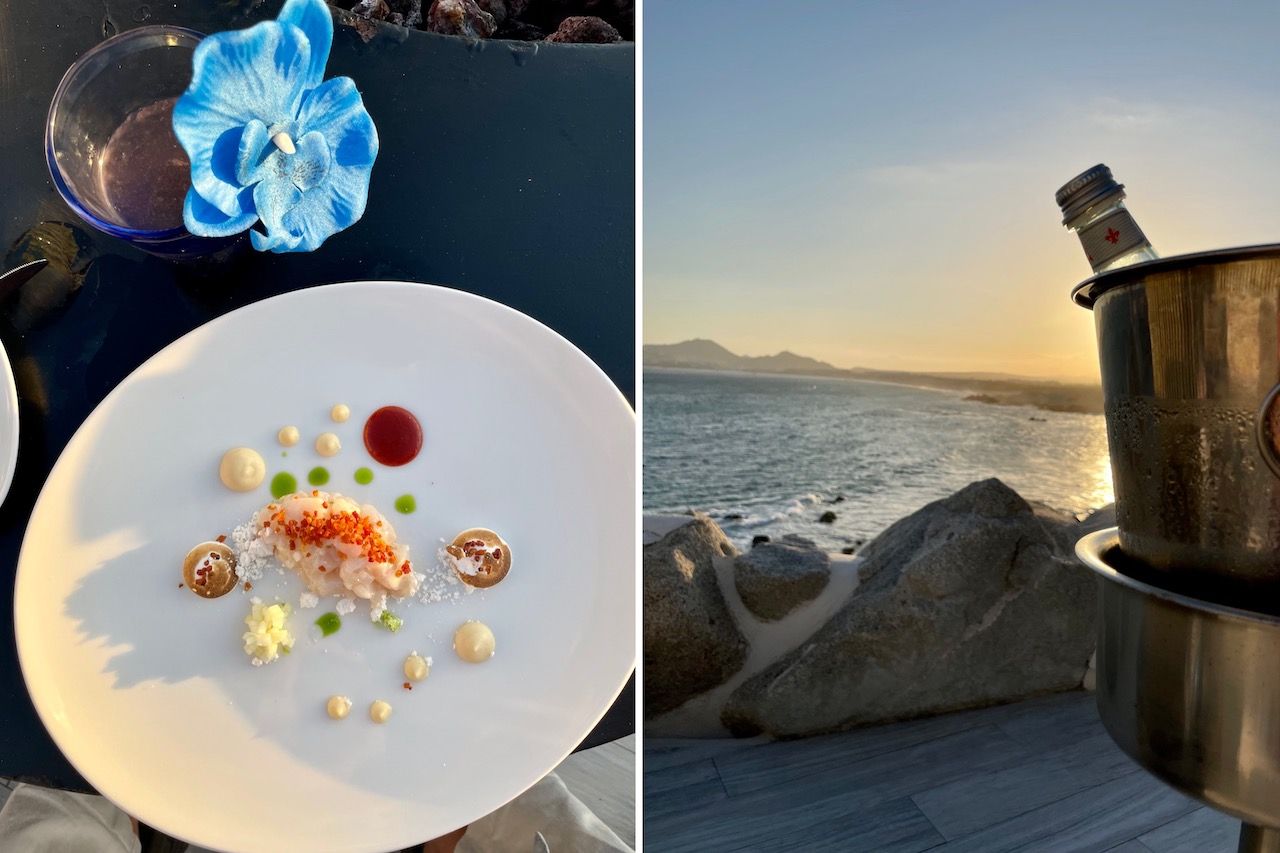
Photo: Nickolaus Hines
Ramos creates three-, five-, and seven-course prix fixe menus that change weekly. He’s been at the helm for two years and has a background cooking in Michelin Star restaurants and high-end resorts. Ramos takes a different perspective than Agave by sourcing from around the world while paying attention to the location — something that proved particularly challenging because of how difficult it can sometimes be to get certain ingredients down to the tip of Baja California.
It’s clear the payoff is worth the effort. Dinner on the night I visited started with scallops with bacon and meringue followed by buttery foie gras with mango and damiana (an herb from Baja California that’s allegedly a natural aphrodisiac). Pasta with shaved black truffle imported from Italy came topped with a saline-enhanced foam. Then came fish in adobo sauce, the juiciest duck I’ve tasted, and cuts of Australian wagyu with a chipotle sauce — all cooked perfectly with balanced flavors and textures.
The same care shown to the food is found in the drinks, which can make even the most staunch margarita drinker opt for something more complex. Maître mixologist Tiziano Tasso developed a cocktail menu inspired by the local environment with beverages ordered from an interactive iPad menu complete with notes on history and culture and ambient noises that play for a five-senses experience. For something even more person-to-person, I spotted him giving a guided Scotch tasting a few tables down.
It’s easy to forget this was once a spot primarily for sunset views.
Outside of cocktails and spirits, sommelier Max Ortiz organized the wine menu from the restaurant’s sizable 145-label wine cellar (which will shortly grow by 100 more) by tasting notes rather than grapes or region. Speaking with Ortiz is the best way to work your way through the wine menu, and he’ll tailor suggestions to your preferences — in my case, a talk and tasting through some of the more than a dozen Mexican wines that Sunset Monalisa features.
Farm to table in the most literal way possible
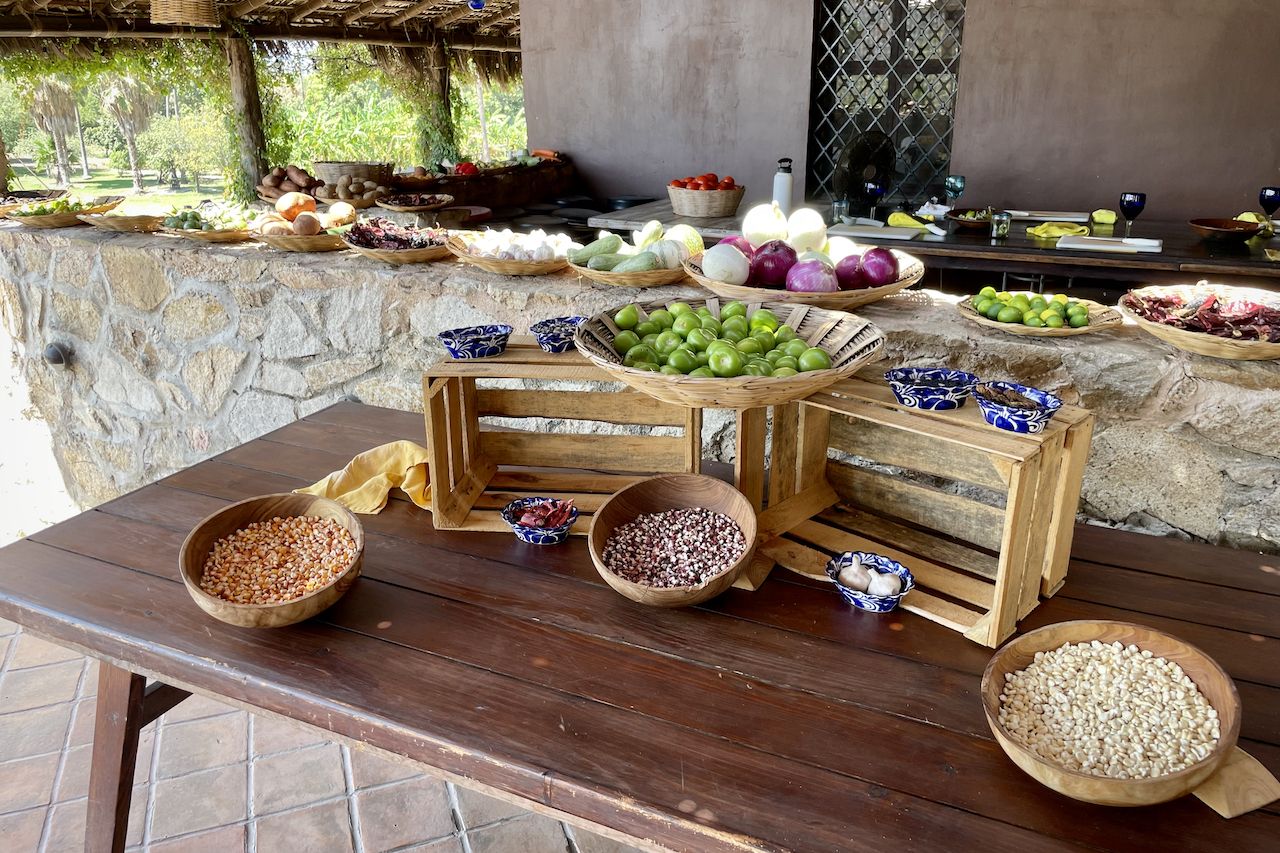
Photo: Nickolaus Hines
Perhaps it shouldn’t be a surprise that Cabo’s food and drink scene is coming into its own. Over the past decade or so, three farms have built a reputation for setting the standard of farm-to-table food in the region: Flora Farms, Acre Baja, and Tamarindos. All have more than a dozen acres of farmland and on-site restaurants.
I spent a half day at Tamarindos for a harvest and cooking class. It’s a short drive from both the town and the resorts, located off the highway down a bumpy, bamboo-lined dirt road. The harvest portion starts with a small group tour of the farm and history of the area. Basil, sage, and thyme were ready for the picking when I visited, as were the in-season key limes and mangos that filled the portions of the farm with heady aromas.
Cabo is where the desert meets the sea, which influenced the region’s history just as much as its present. As I chopped onions and harvested tomatoes for a salsa, my Tamarindo guide told me about how people used to take their boats up to the estuary here where they’d gather water and bury their dead (“That’s why they say our soil is so good,” he added, half laughing). The high water table in the area continues to keep the mango trees — some that date back centuries and produce thousands of mangoes every season — watered without irrigation. If I visited in the winter, he said, everything is ripe but the mangos, including some 20 varieties of tomato.

Photo: Nickolaus Hines
The Tamarindos cooking school opened in 2010 when many visitors to Los Cabos still had the party reputation fresh in their mind. Now people can schedule a farm tour and dinner and then return to award-winning food at their resort.
On my visit we made tamales wrapped in banana leaves, two different types of salsa, cilantro rice, stuffed peppers, and a banana-leaf-wrapped mango jam with cheese for dessert. Maybe it was the breeze coming off the farm or just the feeling of satisfaction you get when you help pick and prepare a meal, but there was something magical about the relatively simple spread.
Though I wasn’t doing the cooking elsewhere in Los Cabos, it wasn’t just the farms where I encountered food with a strong sense of place.
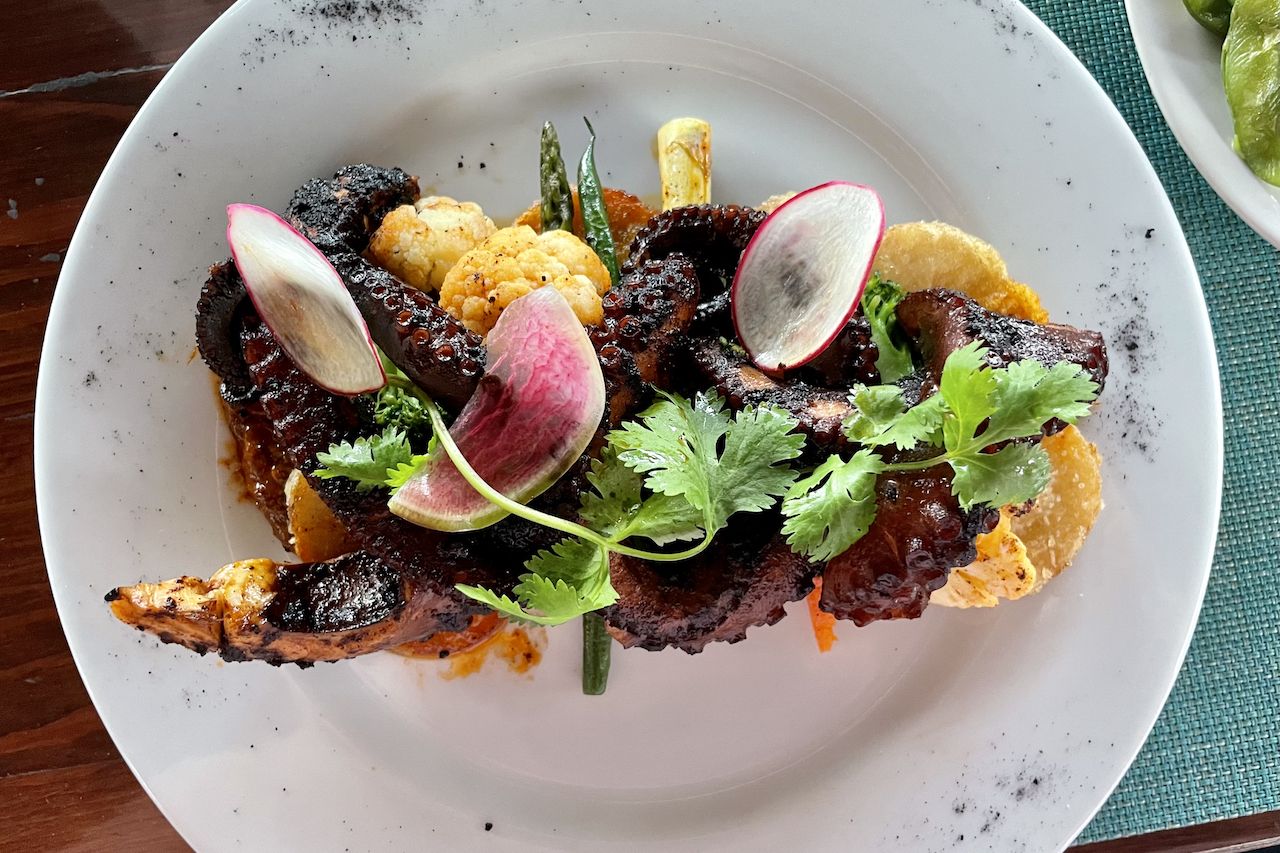
Photo: Nickolaus Hines
At Cabo Villas, I dined on the largest plate of fresh octopus I’ve ever had followed by sushi made with fish caught from the same bit of the Pacific ocean that crashes onto the beach outside of the resort. Baja Brewing Company, which has a location on a Cabo Villas rooftop, as well as one across from Agave in San José del Cabo, serves elevated brewery food like pizza made with beer and spent brewing grains. The beers themselves range from an easy drinking blonde ale to more experimental stuff that you can only find locally, like the Pelirroja amber ale.
At Casa Dorada, the on-site 12 Tribes restaurant dishes ceviche and award-winning tacos that draw inspiration from different parts of Mexico. Some favorites were the villamelón made with a thin-cut meat typical to the town of Yecapixtla in central Mexico, as well as the Baja urbana taco made with tempura shrimp inside of chorizo and topped with a habanero salsa.
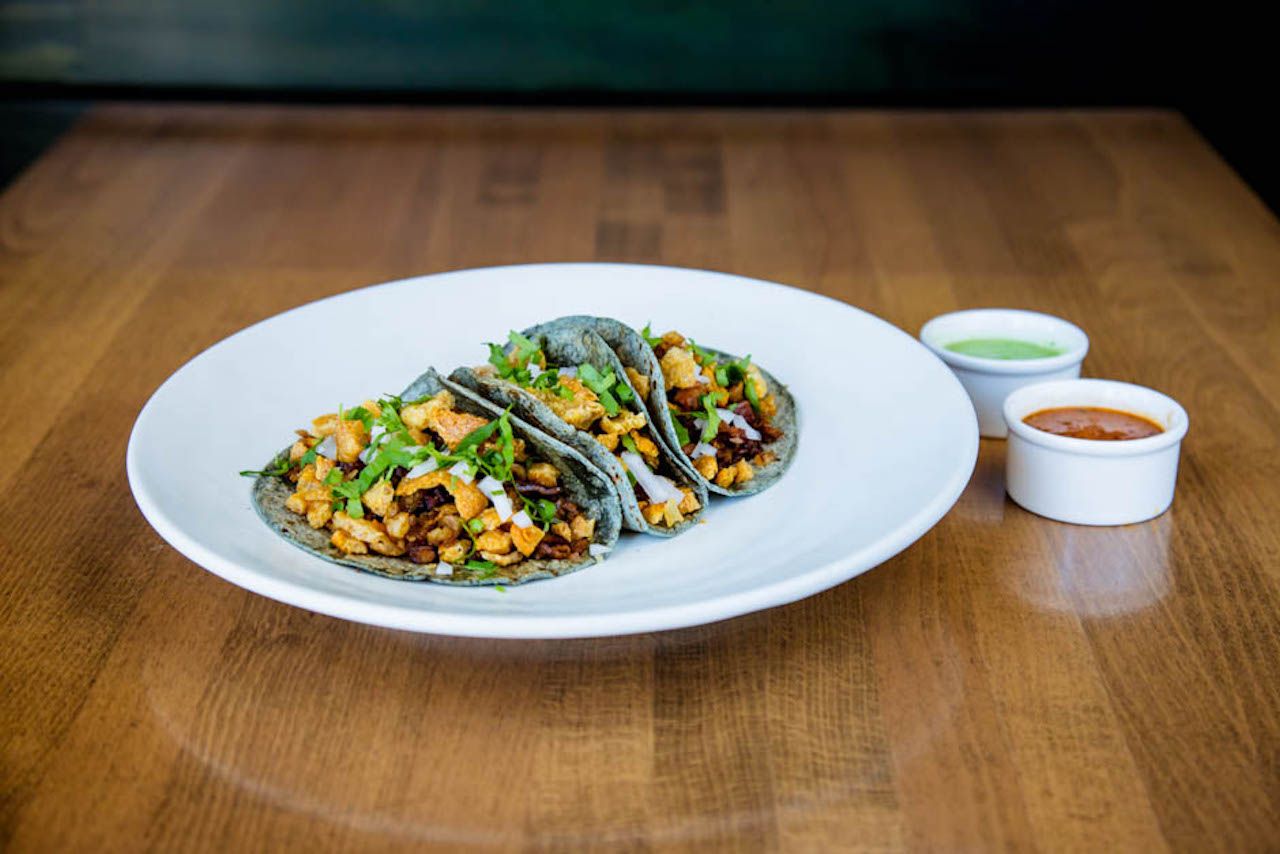
Photo: Casa Dorada
My experience at the resorts is further proof that to dine well in Cabo no longer means shelling out large sums of money or resigning yourself to questionable all-inclusive resort options.
Though for some of the best eating and cultural immersion in the area, schedule your trip around a Thursday in San José del Cabo.
A bright future
Every Thursday from November to June, San José del Cabo hosts the San José Art Walk. Galleries line the street, and dining and entertainment is everywhere you look.
“Before the pandemic,” Patricia Mendoza of Patricia Mendoza Art Gallery tells me, “we had paella and food and wine and flamenco outside. An artist and chef came and made food to be inspired by the pieces, and a sommelier did wine pairings.”

Photo: Nickolaus Hines
When it’s safe to do so, that will return. Meanwhile, Mendoza’s gallery showcases local and international artists, and the courtyard has a small bar filled with hard-to-find mezcals served in the traditional method.
The art walk, chef Gómez of Agave told me over dinner, “is what made this place.” The plan when galleries are once again able to open in full is to provide small plate options along with agave-based spirits like tequila, mezcal, and sotol. The region continues to bring chefs and bar workers who prepare world-class food and drinks that you don’t have to be food obsessed to appreciate.
If the food and drinks at Agave — as well as many of the other restaurants in the area I tried — are any indication, Los Cabos will quickly become just as known for quality dining as it once was for parties.